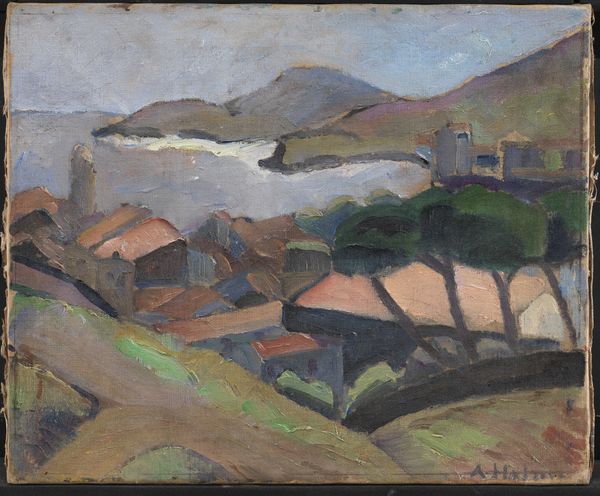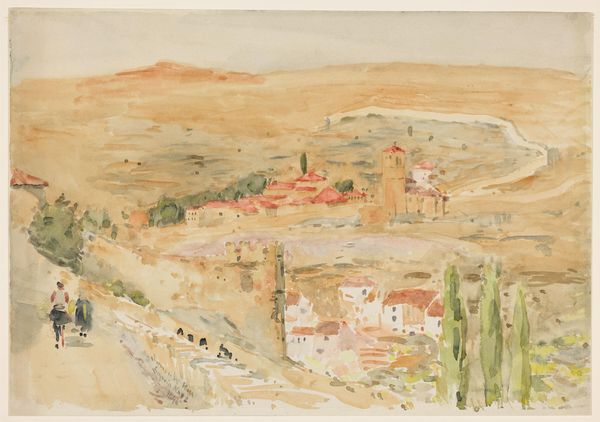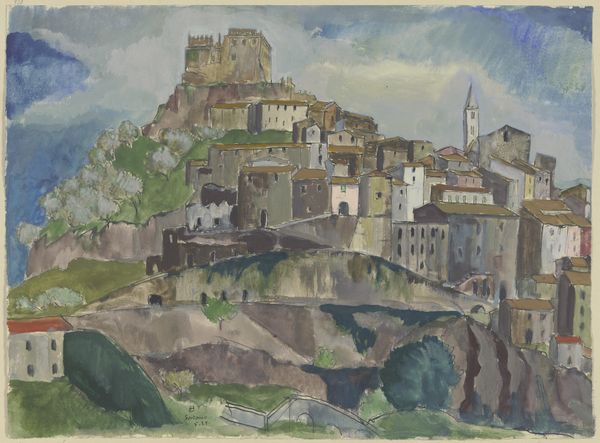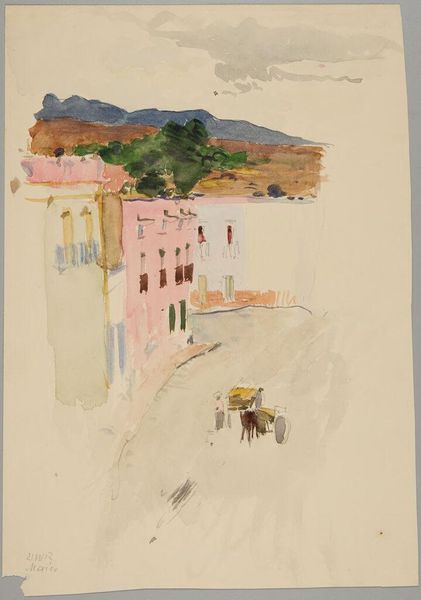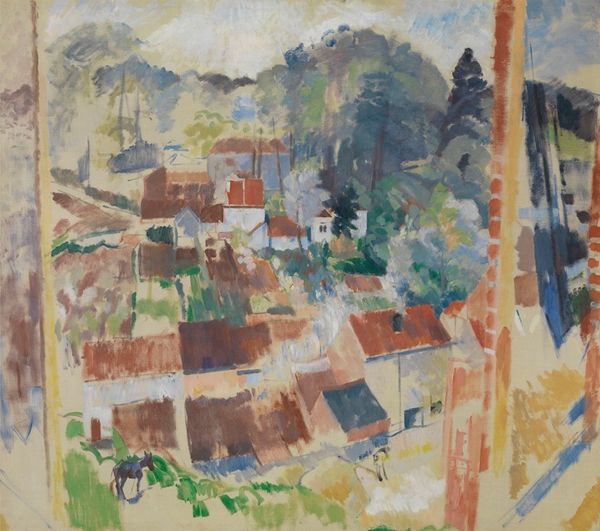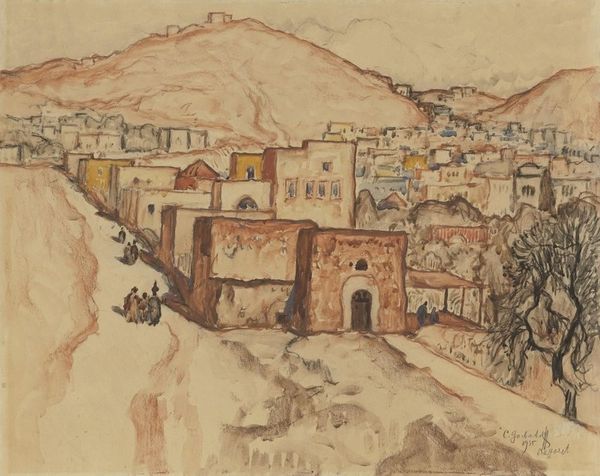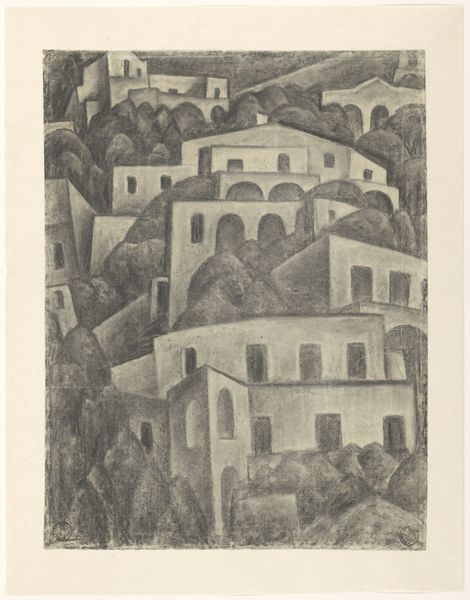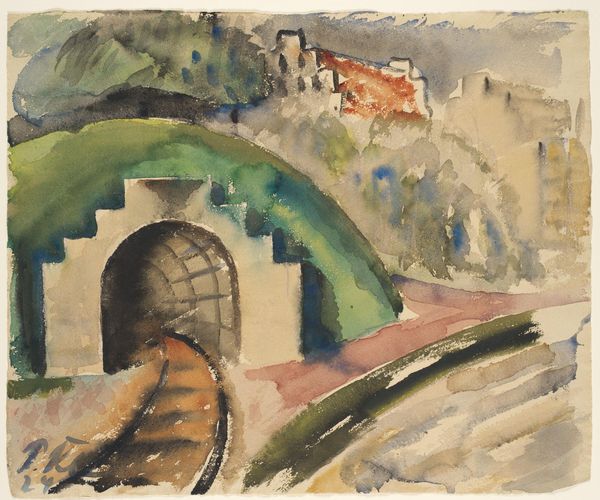
Copyright: Public Domain
Editor: This is Hermann Lismann's "Pitigliano," created in 1924 with watercolors and colored pencils on paper, now at the Städel Museum. The buildings clinging to the cliffside create a visually striking scene; there's something almost precarious about the way the town is situated. What do you make of this landscape, and how might its context shape our understanding? Curator: This cityscape offers us insight into early 20th-century artistic interpretations of place. Lismann, working in the Post-Impressionist style, presents Pitigliano not just as a physical location but also as a symbolic one. Notice the emphasis on the town’s precarious position. This isn't merely about geographical accuracy. It highlights a tension between human construction and the natural world. Do you think this tension mirrors broader societal concerns of the time? Editor: That’s interesting. The early 20th century was a time of enormous upheaval. Maybe this is reflecting concerns about industrialization and mankind's impact on the natural world? Curator: Exactly. The painting can be read as a commentary on humanity's attempts to control and inhabit challenging environments. Consider how the museum context also shapes our perception. The work's display can impact its interpretation and, arguably, reinforce the politics of imagery associated with landscape art. It's interesting to consider what this scene might have represented to viewers in 1924 compared to today. Editor: That makes me consider who was able to own or even see this type of art at that time. Thinking about how art reflects power is so interesting. Curator: Indeed, and reflecting on those questions enhances our engagement. Considering the painting in this light broadens our understanding not only of the artwork itself, but also the society that produced and received it. Editor: Absolutely! This conversation really highlights how historical and cultural contexts deeply influence our understanding of even seemingly simple landscapes. Curator: Agreed, seeing art as an interaction between place, politics and perception expands our comprehension of our past.
Comments
No comments
Be the first to comment and join the conversation on the ultimate creative platform.



